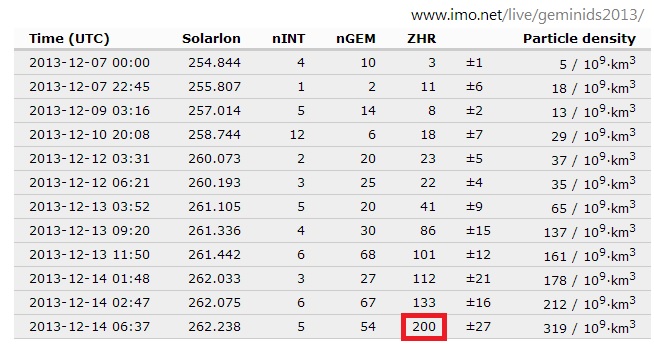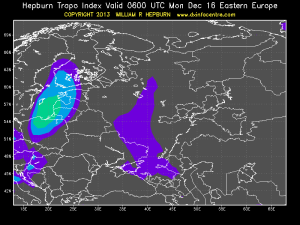When the tropo ends, ES starts. But in my opinion, the most difficult stations to tune in are located between 650 and 1300 km from the QTH (reception location). For that, meteor scatter is an optimal propagation type to fill this black hole, or let’s say grey area. Tropospheric ducting reaches only few times per year that distance. Troposcatter maximum seems to be instead somewhere around 600 km. The shortest reported Sporadic E hops are just a bit over 700 km, but practically the skip less than 1300 km can be considered a rarity.
From the point of view of a listener living in Central Finland, that grey area counts Southern Sweden, most of Latvia, Lithuania, Kaliningrad, Northern Poland, Belarus, Norway and Denmark, Northern Germany and of course huge part of Russia. Sometimes great ducting can bring signals from Southern Sweden and Northern Poland, and Sporadic E in theory could bring all of them, but as both are unsure and rare phenomens, the best way is to have a look on Meteor shower calendar. No more depressing forecast maps! Finally you know when the conditions will be 😉
Orionids
Comet of Origin: 1P/Halley
Radiant: Just to the north of constellation Orion’s bright star Betelgeuse
Active: Oct. 4-Nov. 14, 2015
Peak Activity: Oct. 21-22, 2015
Peak Activity Meteor Count: 20 meteors per hour
Meteor Velocity: 41 miles (66 kilometers) per secondLeonids
Comet of Origin: 55P/Tempel-Tuttle
Radiant: constellation Leo
Active: Nov. 5-30, 2015
Peak Activity: Nov. 17-18, 2015
Peak Activity Meteor Count: 15 meteors per hour
Meteor Velocity: 44 miles (71 kilometers) per secondGeminids
Comet of Origin: 3200 Phaethon
Radiant: constellation Gemini
Active: Dec. 4-16, 2015
Peak Activity: Dec. 13-14, 2015
Peak Activity Meteor Count: 120 meteors per hour
Meteor Velocity: 22 miles (35 kilometers) per secondSource: https://www.nasa.gov/jpl/asteroids/best-meteor-showers/#.VhomsCu9S58
After explaining WHY, the question is WHAT you need
an antenna; a whip antenna is usually not enough to catch meteor reflections, but even a small Yagi (3 of 4 elements) is enough good. I would say it is even optimal during long overnight recording, because you don’t have to change direction every now and then. Pointing simply towards South it brings most of continental Europe to earphones
a good empty frequency; choosing a frequency I have two criteria. It has to be empty, so that not even a semi local station could occupate it during overnight recording. It is very annoying to check recording if the meteor bursts are not easily visible on the screen. Another criteria is the target. The frequency should offer some (new) high-power stations to catch (let’s say up to 30kW).
lots of luck; in the end, you need to be lucky to catch a reflection when there is no music, but something that could be identified. It’s even harder if the reflection lasts usually less than 20 second (thus longest reflections are closer to 5 minutes!) With lots of luck you realize that you actually have caught an ID of <10kW station that was not even on your target list. It happens every now and then!
Just to give few examples:
1. My only one from Lithuania: Lietuvos Radijas (LRT Radio Reklama) 98.8 MHz, only 4 kW – 825 km.
2. PR regional stations are good targets, high power tx’s, lot’s of local programs
Polskie Radio PiK 100.1 MHz – 120 kW – 1112 km
3. Radio Norge 100.1 MHz – 57 kW – 1075 km
4. Even a short reflection can bring ID (Radio Zet PL)…
5. But always there is no space for whole station name! Challenging!
Topic in our forum: http://bbs.fmdx.tk/index.php?topic=395.0





